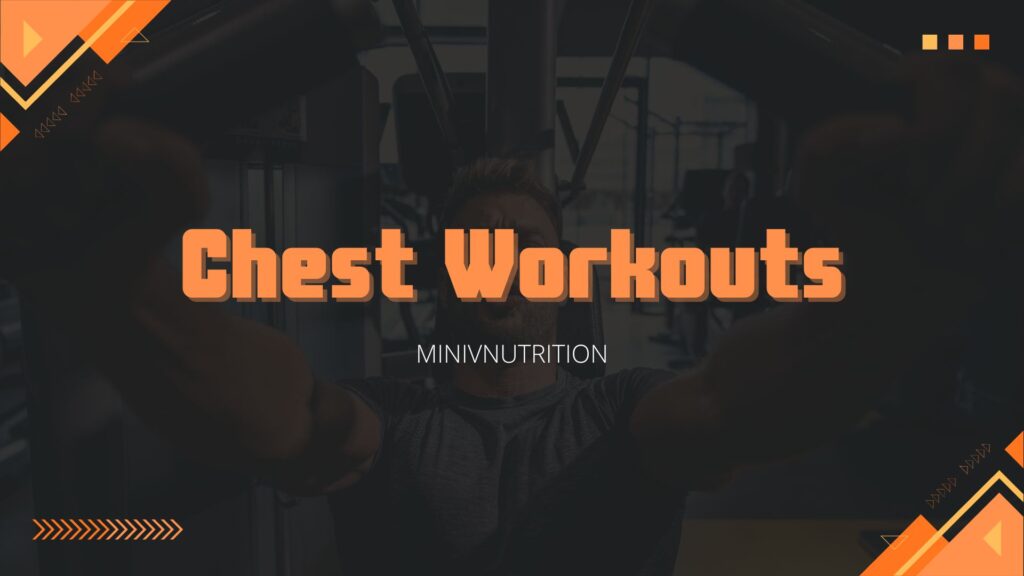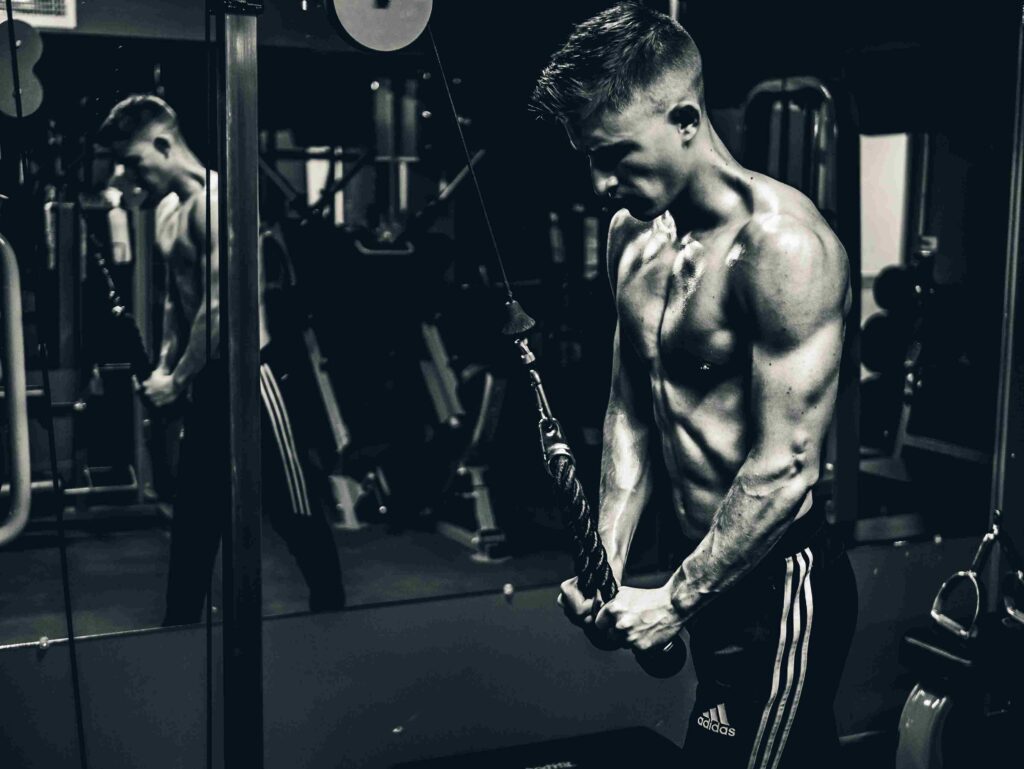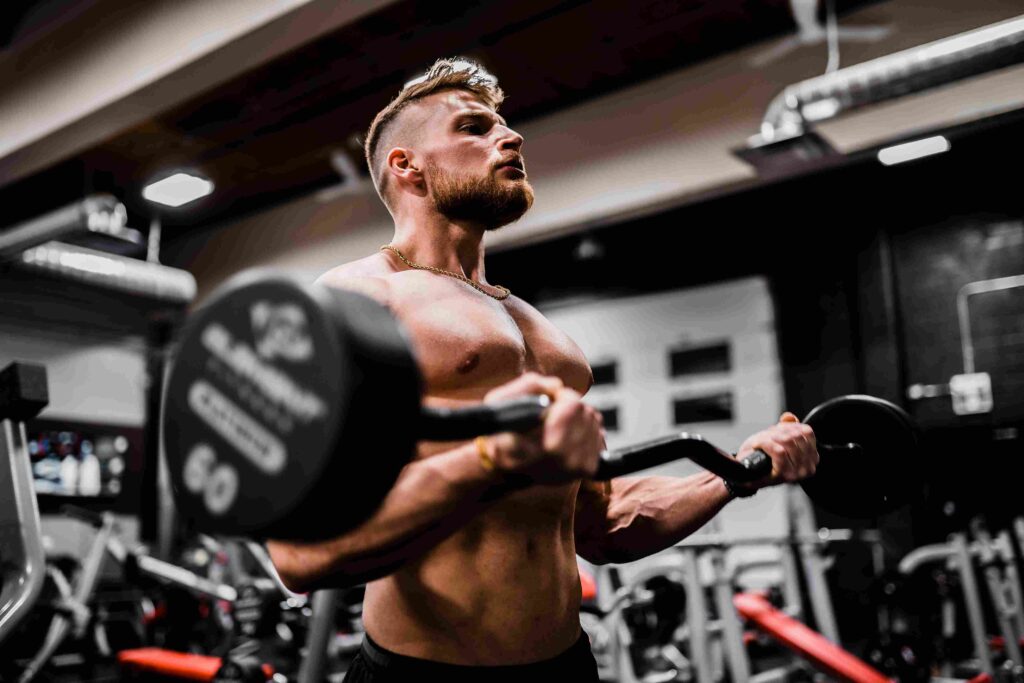A well-developed chest not only enhances your physique but also contributes to overall upper body strength and functionality. Whether your goal is aesthetics or improved performance, building a broad, V-shaped chest is a common objective for many fitness enthusiasts.
In this comprehensive guide, we will explore the importance of a strong chest, the best exercises for building size and definition, how to structure an effective chest workout, common mistakes to avoid, and essential tips for recovery.

Table of Contents
Importance of a Strong Chest
- Upper Body Strength: A strong chest is crucial for upper body strength, helping with daily activities like pushing, lifting, and carrying.
- Aesthetics: A well-defined chest adds symmetry and balance to your physique, contributing to an impressive appearance.
- Athletic Performance: A powerful chest is essential for athletes participating in sports like boxing, swimming, and football.
Best Chest Exercises for Building Size and Definition
Achieving a well-developed chest with both size and definition is a common fitness goal. To attain this, it’s crucial to incorporate a variety of chest exercises into your workout routine. This comprehensive guide outlines the best chest exercises that target different areas of the chest, helping you build size and enhance definition.
1. Bench Press
The bench press is a cornerstone of chest training, known for its ability to target the pectoral muscles effectively. It’s a classic compound exercise that promotes both size and strength.
Variations of the bench press, such as the flat bench, incline bench, and decline bench press, allow you to target different areas of the chest, emphasizing the upper, middle, and lower portions, respectively.
The bench press also engages the triceps and shoulders, contributing to overall upper body development.
2. Dumbbell Presses
Dumbbell presses offer a wider range of motion compared to the barbell bench press. Variations like incline and decline dumbbell presses provide versatility and help engage different parts of the chest.
Incline dumbbell presses emphasize the upper chest, while decline dumbbell presses target the lower chest. Including these variations in your routine can lead to a well-rounded chest development.
3. Push-Ups
Push-ups are a versatile bodyweight exercise that can be easily modified to target various areas of the chest. The standard push-up primarily works the middle chest.
To emphasize the upper chest, you can perform incline push-ups with your hands elevated on a surface. Conversely, decline push-ups with your feet elevated target the lower chest.
4. Cable Flyes
Cable flyes are excellent for isolating the chest muscles and improving definition. They provide constant tension throughout the movement, making them effective for developing the inner and outer chest.
Variations like high cable flyes and low cable flyes allow you to emphasize different portions of the chest. These are particularly useful for creating a more defined and sculpted chest.
5. Dips
Dips are a compound exercise that not only work the chest but also engage the shoulders and triceps. Including dips in your routine contributes to a well-rounded upper body.
To target the chest more during dips, lean forward slightly and focus on a wider grip. This modification shifts the emphasis to the chest muscles.

How to Structure a Chest Workout
- Warm-Up: Begin with 5-10 minutes of light cardio to increase blood flow to the chest muscles. Dynamic stretches for the chest and shoulders are also beneficial.
- Compound Exercises: Start your workout with compound exercises like the bench press, focusing on 3-4 sets of 6-8 repetitions.
- Isolation Exercises: Move on to isolation exercises such as dumbbell flyes and cable flyes, performing 3-4 sets of 8-10 repetitions.
- Variation: Incorporate different angles and variations to target various parts of the chest.
- Intensity: Adjust the number of sets and repetitions based on your goals, with a focus on progressive overload for muscle growth.
- Rest: Allow 1-2 minutes of rest between sets to recover.
Common Mistakes to Avoid
- Poor Form: Maintain proper form to prevent injuries. Ensure a controlled and full range of motion.
- Overtraining: Avoid excessive chest workouts that can lead to overuse injuries.
- Skipping Warm-Up: Always warm up to prepare the chest muscles for the workout.
- Neglecting Other Muscle Groups: Balance your workout by including exercises for other muscle groups, such as back and legs.
- Lack of Recovery: Give your chest muscles time to recover before training them again.
Tips for Recovery
- Stretching: Stretch your chest muscles after your workout to improve flexibility.
- Hydration: Stay hydrated to support muscle function and recovery.
- Nutrition: Consume protein and essential nutrients to aid muscle repair.
- Rest: Prioritize sleep for optimal recovery.
- Foam Rolling: Use a foam roller to release muscle tension and reduce soreness.

Building a broad, V-shaped chest is a fitness goal that can enhance both your appearance and strength. By incorporating the best chest exercises, structuring your workouts effectively, avoiding common mistakes, and prioritizing recovery, you can achieve a powerful and well-defined chest.
Whether you’re a bodybuilder, athlete, or simply looking to improve your physique, a strong chest is a valuable asset on your fitness journey. So, put in the effort, stay consistent, and watch your chest muscles grow and define, bringing you closer to your fitness goals.


